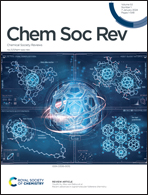Nucleic acid degradation as barrier to gene delivery: a guide to understand and overcome nuclease activity
Abstract
Gene therapy is on its way to revolutionize the treatment of both inherited and acquired diseases, by transferring nucleic acids to correct a disease-causing gene in the target cells of patients. In the fight against infectious diseases, mRNA-based therapeutics have proven to be a viable strategy in the recent Covid-19 pandemic. Although a growing number of gene therapies have been approved, the success rate is limited when compared to the large number of preclinical and clinical trials that have been/are being performed. In this review, we highlight some of the hurdles which gene therapies encounter after administration into the human body, with a focus on nucleic acid degradation by nucleases that are extremely abundant in mammalian organs, biological fluids as well as in subcellular compartments. We overview the available strategies to reduce the biodegradation of gene therapeutics after administration, including chemical modifications of the nucleic acids, encapsulation into vectors and co-administration with nuclease inhibitors and discuss which strategies are applied for clinically approved nucleic acid therapeutics. In the final part, we discuss the currently available methods and techniques to qualify and quantify the integrity of nucleic acids, with their own strengths and limitations.



 Please wait while we load your content...
Please wait while we load your content...